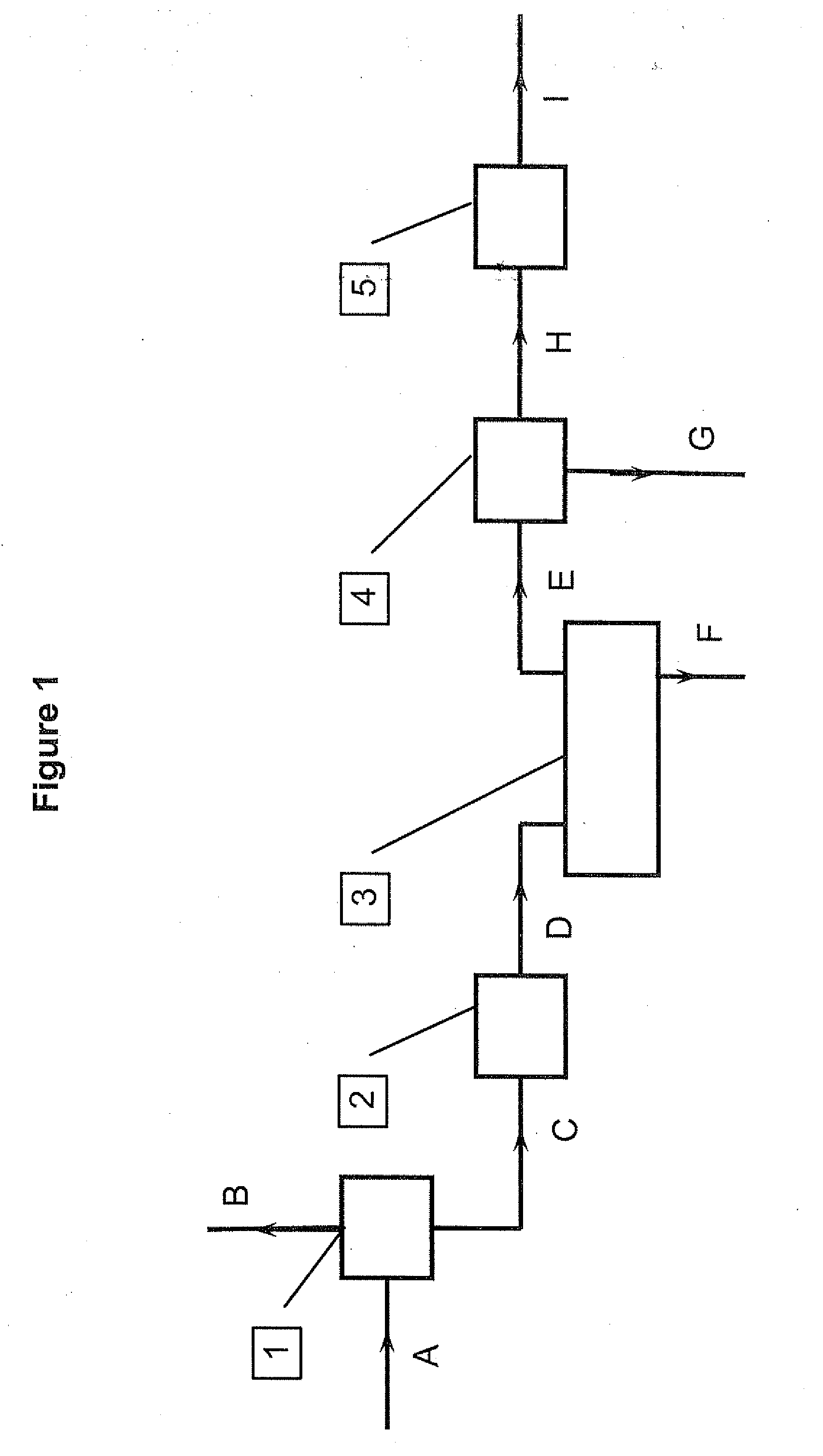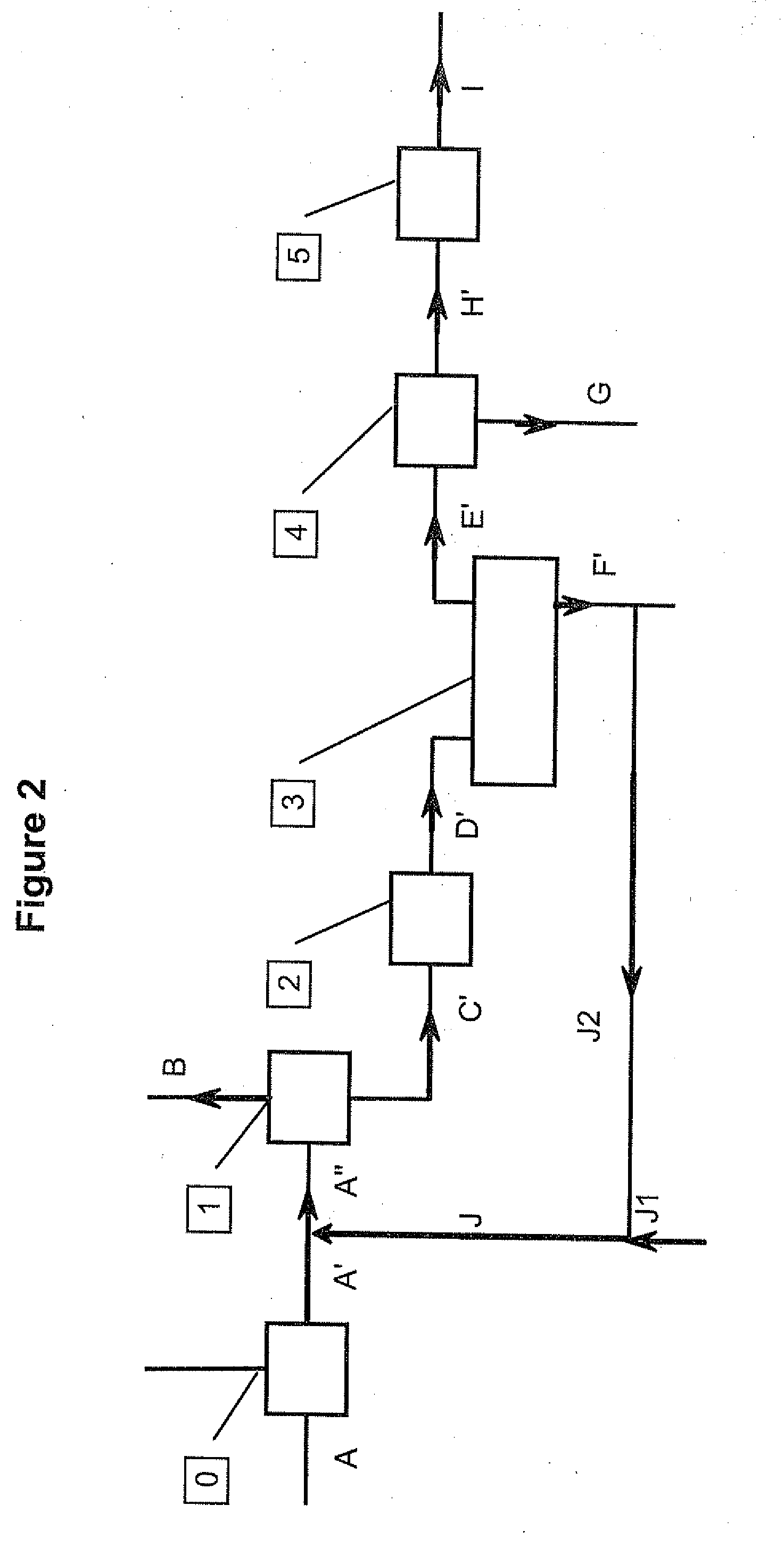Separation improvement in a method of producing alkyl esters from vegetable or animal oil and an aliphatic monoalcohol
- Summary
- Abstract
- Description
- Claims
- Application Information
AI Technical Summary
Benefits of technology
Problems solved by technology
Method used
Image
Examples
Embodiment Construction
[0033]The present invention describes a method of producing fatty acid alkyl esters and glycerin implementing, in a reaction section, a set of transesterification reactions between a vegetable or animal oil and an aliphatic monoalcohol, and using a heterogeneous solid catalyst, comprising:
[0034]a) a stage of adding a glycerin phase of purity above 50% by mass in the effluent from the reaction section comprising alkyl esters, glycerol, partly converted triglycerides and alcohol,
[0035]b) an excess alcohol evaporation stage,
[0036]c) a cooling stage, and
[0037]d) a stage of decanting the glycerin phase and obtaining a supernatent ester phase.
[0038]The glycerin phase addition stage is preceded by a stage of pre-evaporation of part of the excess alcohol.
[0039]At the end of the decantation stage, the ester phase obtained can be sent to one or more residual glycerin separation stages. Advantageously, this subsequent separation first takes place in a coalescer from which a glycerin phase and ...
PUM
| Property | Measurement | Unit |
|---|---|---|
| Percent by mass | aaaaa | aaaaa |
| Percent by mass | aaaaa | aaaaa |
| Percent by mass | aaaaa | aaaaa |
Abstract
Description
Claims
Application Information
 Login to View More
Login to View More - Generate Ideas
- Intellectual Property
- Life Sciences
- Materials
- Tech Scout
- Unparalleled Data Quality
- Higher Quality Content
- 60% Fewer Hallucinations
Browse by: Latest US Patents, China's latest patents, Technical Efficacy Thesaurus, Application Domain, Technology Topic, Popular Technical Reports.
© 2025 PatSnap. All rights reserved.Legal|Privacy policy|Modern Slavery Act Transparency Statement|Sitemap|About US| Contact US: help@patsnap.com


